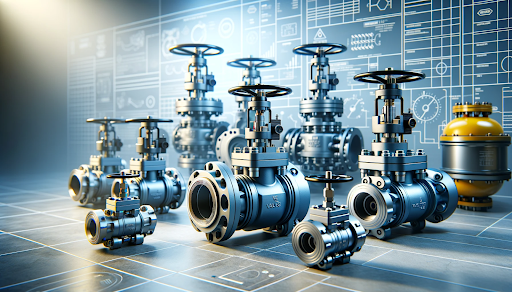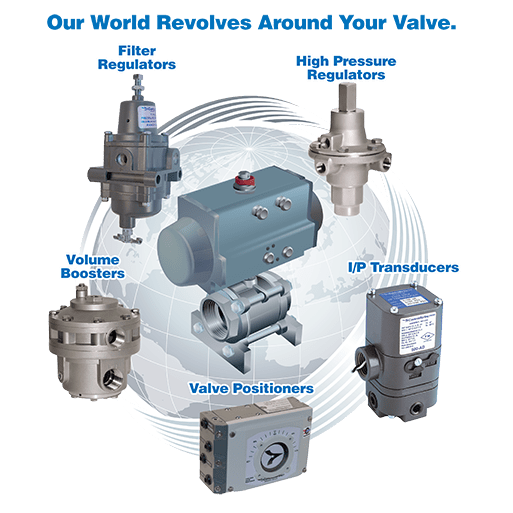Selecting the Right Control Valves: An Overview to Optimal System Efficiency
Selecting the Right Control Valves: An Overview to Optimal System Efficiency
Blog Article

Maximize Energy Financial Savings and Comfort With Advanced Structure Automation Controls
In the world of modern-day style and center monitoring, the combination of advanced structure automation manages stands as a crucial innovation. The merging of modern technology and sustainability has actually birthed a new era where power effectiveness, comfort optimization, and functional streamlining are no much longer obtainable realities however remote aspirations. By utilizing the power of automation, structures can adapt, respond, and evolve in manner ins which were when unimaginable. The possibility for substantial energy financial savings and improved comfort is not simply an opportunity however a pledge waiting to be satisfied. This standard shift in structure administration holds the essential to opening a world where environmental conscientiousness and passenger well-being harmoniously exist together within the wall surfaces of our structures.
Energy Performance Conveniences
Energy effectiveness benefits can significantly decrease power intake and functional prices in buildings. By executing energy-efficient methods and innovations, building owners and operators can accomplish significant financial savings while additionally contributing to environmental sustainability. One of the primary advantages of boosting power efficiency in buildings is the reduction of utility costs. Energy-efficient systems, such as advanced structure automation controls, can enhance making use of resources like air conditioning, lighting, and home heating, causing lower energy costs in time.
Additionally, improved energy efficiency can prolong the life expectancy of building equipment and systems. By operating more efficiently, heating and cooling systems, light, and various other structure elements experience less wear and tear, causing minimized maintenance and replacement prices. In addition, energy-efficient buildings usually command greater home values and rental prices, providing lasting financial benefits to proprietors.
Additionally, power performance can enhance passenger convenience and productivity. Properly managed interior settings with ideal lighting and thermal conditions produce an even more enjoyable and conducive workspace, leading to boosted staff member complete satisfaction and efficiency. Overall, the power efficiency benefits related to advanced structure automation controls are complex, incorporating price financial savings, environmental stewardship, and owner well-being.
Boosted Convenience Control
Enhancing convenience control in building atmospheres needs a sophisticated integration of sophisticated automation systems for optimal occupant wellness. By making use of advanced building automation controls, centers can customize the interior environment to meet the specific needs and choices of occupants. control valves.
By incorporating these innovative controls, structures can not just improve convenience however likewise boost power efficiency by optimizing system operations based on real occupancy and use patterns. Inevitably, focusing on passenger comfort through innovative automation systems leads to a more satisfying and much healthier interior atmosphere.
Functional Performance Improvements

Additionally, the application of real-time surveillance and analytics devices enables structure operators to determine power inefficiencies and functional anomalies quickly. By continuously monitoring power use patterns and system efficiency metrics, modifications can be made in real-time to maximize power consumption and make sure peak functional efficiency. control valves. In addition, incorporating demand reaction strategies into building automation controls can further enhance operational effectiveness by dynamically adjusting energy usage based on grid problems and pricing signals
Indoor Climate Optimization
Effective indoor environment optimization is a basic element of structure automation controls, ensuring occupants' convenience and wellness while taking full advantage of energy cost savings. By using sophisticated sensing units and controls, constructing automation systems can continuously check and adjust temperature, moisture degrees, air top quality, and air flow to produce an optimal interior setting. Keeping regular and comfortable conditions not just enhances resident fulfillment yet additionally enhances productivity and overall health.
Indoor environment optimization likewise plays an essential function in power performance. By fine-tuning air flow, heating, and air conditioning systems based upon real-time information and tenancy patterns, building automation controls can considerably decrease power consumption - control valves. Implementing methods such as demand-controlled ventilation and thermal zoning can assist lessen energy waste while guaranteeing that each location of the building obtains the required conditioning.

Lasting Atmosphere Creation
Building automation manages not only optimize interior environment conditions for power performance and resident convenience yet additionally lay the structure for developing a lasting environment with strategic management of resources and systems. By integrating innovative building automation technologies, such as sensing units, actuators, and smart software, facilities can check and readjust power use in real-time to lessen waste and decrease their carbon footprint. These systems make it possible for anticipating maintenance, recognizing potential concerns before they escalate and enhancing tools efficiency to boost long life and effectiveness.
Furthermore, lasting setting development expands beyond energy administration to include water conservation, waste reduction, and interior air top quality improvement. Building automation controls can manage water use, discover leakages, and ensure appropriate garbage disposal techniques, adding to total sustainability efforts. In addition, by keeping track of and managing air flow this post and purification systems, these technologies boost occupant wellness and productivity while decreasing energy usage associated with HVAC operations.
Verdict
In verdict, advanced structure automation controls offer substantial benefits in terms of energy cost savings, comfort control, functional efficiency, interior climate optimization, and developing a lasting environment. By carrying out these controls, buildings can attain optimum efficiency while lowering power intake and enhancing resident convenience. It is obvious that making use of sophisticated automation innovation is crucial in boosting structure performance and creating a much more lasting future.
Power performance benefits can dramatically lower power intake and functional expenses in structures. Generally, the power performance benefits connected with sophisticated building automation controls are complex, incorporating expense savings, ecological stewardship, and owner wellness.
Additionally, incorporating demand reaction techniques right find out this here into building automation controls can further enhance operational performance by dynamically changing power usage based on grid conditions and pricing signals.
Building automation regulates not just maximize indoor climate problems for power effectiveness and occupant convenience but also lay the structure for developing a sustainable environment through tactical administration of sources and systems.In conclusion, progressed building automation controls deal significant advantages in terms of power savings, comfort control, operational performance, indoor environment optimization, and producing a sustainable environment.
Report this page